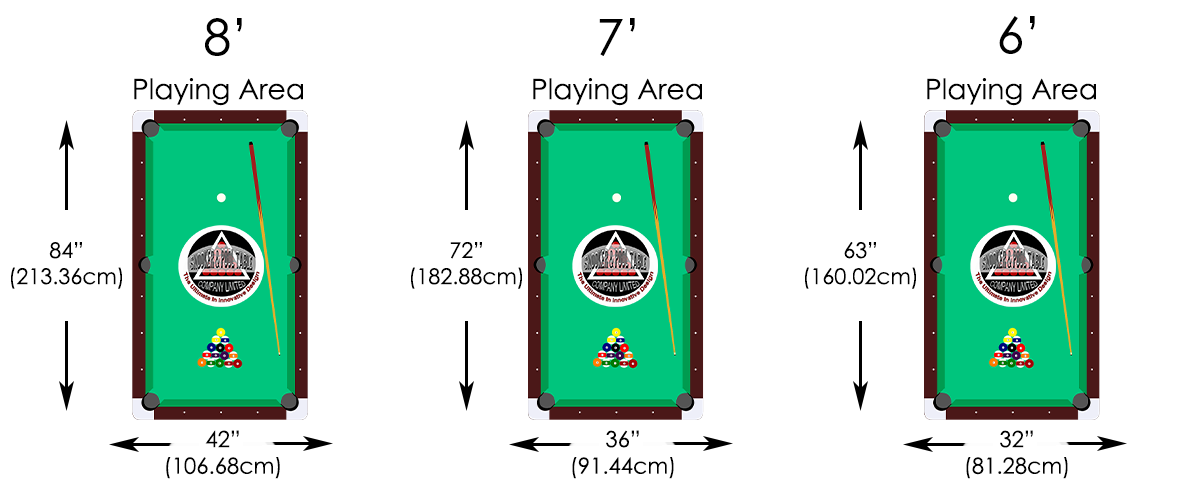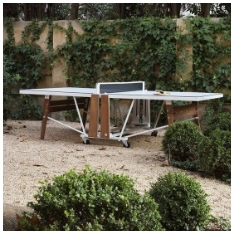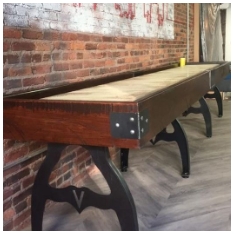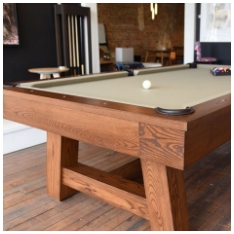Choosing a pool table is not just about design or material. One of the most overlooked yet critical aspects is ensuring the table fits comfortably in your space. Whether you're setting up a home game room or furnishing a recreational space, understanding pool table sizes and room dimensions is essential.
This article outlines everything you need to know about standard pool table dimensions and how to calculate the space you’ll need around it to play comfortably.
Understanding Standard Pool Table Sizes
Pool tables come in several standard sizes. Each is suited for different playing styles and room layouts. The three most common pool table sizes are:
7-Foot Pool Table (Bar Size)
- Dimensions: 39 inches x 78 inches (playing surface)
- Best For: Home use, smaller spaces, casual players
- Typical Cue Length Compatibility: 48-52 inches
A 7-foot table is often seen in bars and is preferred for casual or recreational use. While it provides a fun game, it doesn’t offer the precision required in professional settings.
8-Foot Pool Table (Standard Size)
- Dimensions: 44 inches x 88 inches (playing surface)
- Best For: Home game rooms, moderate skill levels
- Cue Compatibility: 52-58 inches
An 8-foot table is the most common choice for home installations. It provides a good balance between recreational play and more serious practice.
9-Foot Pool Table (Tournament Size)
- Dimensions: 50 inches x 100 inches (playing surface)
- Best For: Professional use, larger rooms, advanced players
- Cue Compatibility: 58 inches standard
This is the size used in official tournaments. It requires the most space but offers the most

Calculating the Right Room Dimensions
To determine if a pool table will fit in your space, consider the following formula:
Room Length = Table Length + (Cue Length × 2)
Room Width = Table Width + (Cue Length × 2)
For example, an 8-foot table (88” x 44”) with a 58” cue requires:
- Room Length: 88” + 116” = 204” or 17 feet
- Room Width: 44” + 116” = 160” or 13.3 feet
Always allow additional space if you anticipate furniture, side seating, or storage near the table.
Cue Length and Its Impact on Space
Cue length can significantly impact the room size needed. While 58 inches is the most common, players may use shorter cues in confined areas.
Common Cue Lengths
- 48-inch cue – Ideal for tight corners or young players
- 52-inch cue – A compromise for smaller rooms
- 58-inch cue – Standard for most adults
Adjusting cue length can help make use of smaller rooms, though it may slightly affect play dynamics.
Tips for Planning Your Game Room Layout
Once you've selected a pool table size, ensure the layout supports comfortable gameplay and accessibility.
Avoid Obstructions
Doors, walls, furniture, and lighting fixtures should not interfere with cue movements. Ensure clearances in all directions from the table.
Consider Flooring
A level, non-slippery floor is essential. Carpeting is common, but ensure the surface under the table is stable.
Proper Lighting
Hang overhead lighting fixtures centered above the table. The light should cover the entire playing surface without glare.
Additional Features
If space permits, consider adding seating, cue racks, or storage cabinets. These should be placed outside of the cue swing zone.
Converting Small Rooms for Pool Tables
Smaller rooms can still accommodate pool tables with the right adjustments. Here’s how:
- Use shorter cues: Cues down to 48 inches can still offer a good game.
- Install wall-mounted racks: Save floor space with vertical storage.
- Choose a smaller table: A 6- or 7-foot table may better fit constrained areas.
- Custom tables: Some manufacturers offer custom-sized tables for unique room dimensions.
When to Choose a Professional Installer
If unsure about measurements or setup, hiring a professional installer is a wise decision. They ensure:
- Table leveling
- Proper alignment
- Accurate positioning
- Full assembly and inspection
Installers also advise on placement for optimal gameplay and room usage.
Conclusion
Selecting the right pool table involves more than picking a size. The space around the table plays a crucial role in gameplay comfort and functionality. With careful planning and the right measurements, you can create a dedicated space that enhances your playing experience.
Whether you're setting up for casual games with friends or honing your skills seriously, the right table and room configuration will make all the difference.





